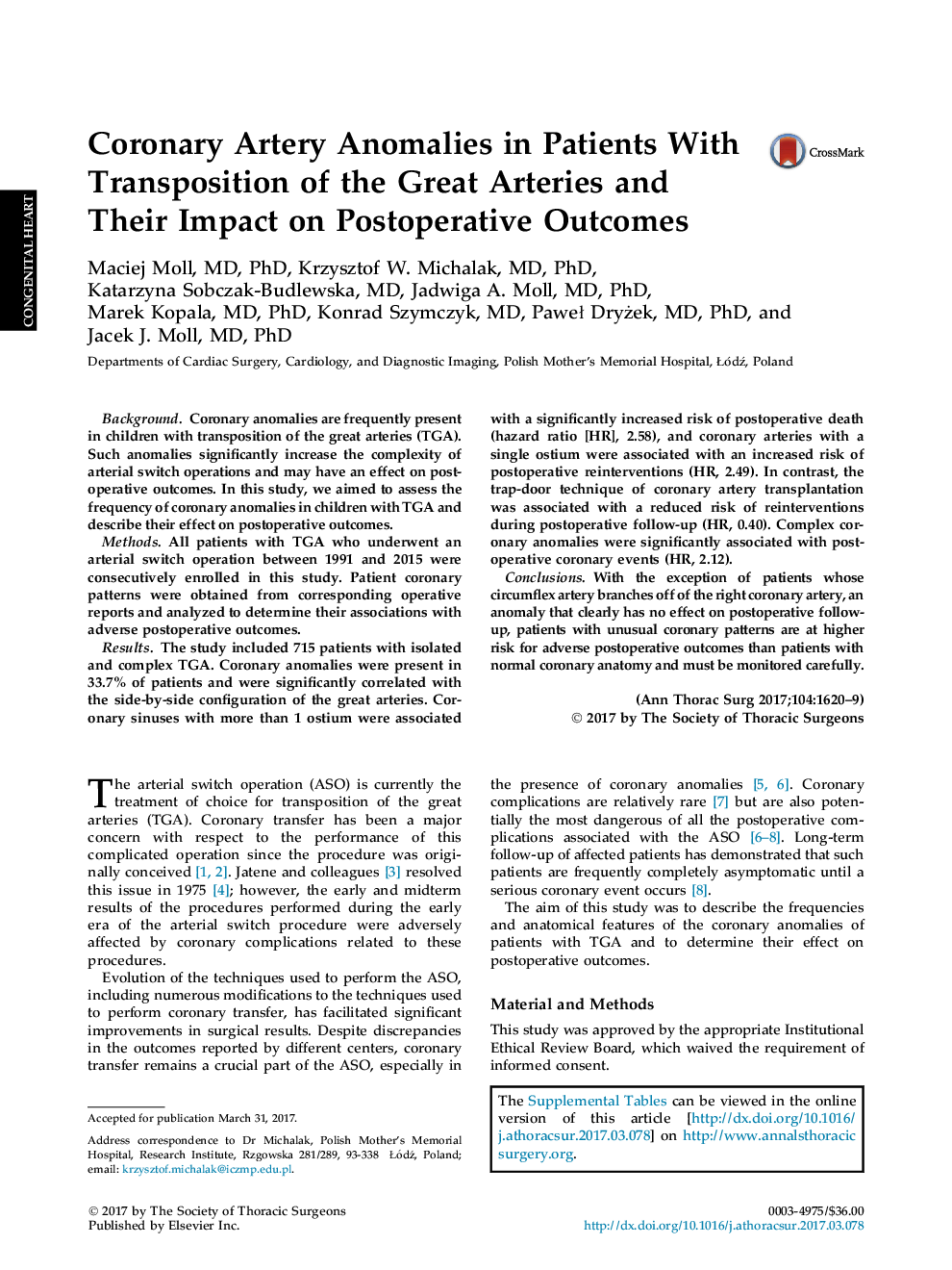| Article ID | Journal | Published Year | Pages | File Type |
|---|---|---|---|---|
| 5596576 | The Annals of Thoracic Surgery | 2017 | 9 Pages |
BackgroundCoronary anomalies are frequently present in children with transposition of the great arteries (TGA). Such anomalies significantly increase the complexity of arterial switch operations and may have an effect on postoperative outcomes. In this study, we aimed to assess the frequency of coronary anomalies in children with TGA and describe their effect on postoperative outcomes.MethodsAll patients with TGA who underwent an arterial switch operation between 1991 and 2015 were consecutively enrolled in this study. Patient coronary patterns were obtained from corresponding operative reports and analyzed to determine their associations with adverse postoperative outcomes.ResultsThe study included 715 patients with isolated and complex TGA. Coronary anomalies were present in 33.7% of patients and were significantly correlated with the side-by-side configuration of the great arteries. Coronary sinuses with more than 1 ostium were associated with a significantly increased risk of postoperative death (hazard ratio [HR], 2.58), and coronary arteries with a single ostium were associated with an increased risk of postoperative reinterventions (HR, 2.49). In contrast, the trap-door technique of coronary artery transplantation was associated with a reduced risk of reinterventions during postoperative follow-up (HR, 0.40). Complex coronary anomalies were significantly associated with postoperative coronary events (HR, 2.12).ConclusionsWith the exception of patients whose circumflex artery branches off of the right coronary artery, an anomaly that clearly has no effect on postoperative follow-up, patients with unusual coronary patterns are at higher risk for adverse postoperative outcomes than patients with normal coronary anatomy and must be monitored carefully.
